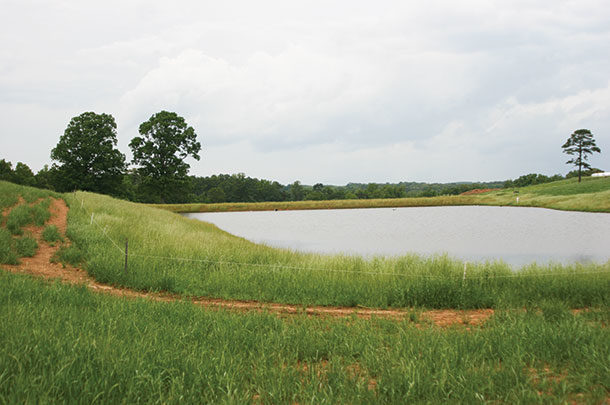But in 1987 – after nearly two years of searching – the young couple was able to get a great deal on a 200-acre farm that they thought had a lot of potential. Unfortunately, Chandler quips, potential was all it had.
Like many farms in the area, it had been in cotton production for close to a century, and consequently, the intensive row-crop production on highly erodible slopes and recent neglect had diminished the land’s topsoil and had created a long list of other management problems.
In addition to the severe erosion issues, the farm had collapsing structures, a termite-infested 19th century farmhouse, a hog finishing floor in shambles, jungles of Chinese privet, fields covered in johnsongrass, 20 acres of bottom-land densely entangled and under water, five old home sites concealed by over-growth, four abandoned wells, a wooded area robbed of mature pines, vandalism and a silted-in pond whose dam was about to collapse.
“We were almost at a loss wondering where to begin,” Chandler laughs. “But now I can proudly say 24,000 hogs, 1 million pullets, several hundred cows, a few vegetables, 150 acres of fescue and hybrid bermuda, three college educations and 20 years later – things look a little different.”
Agriculture is more than production
But a “little” different is a mere understatement and a humble response to what Chandler and his family have accomplished on Still Water Farm.
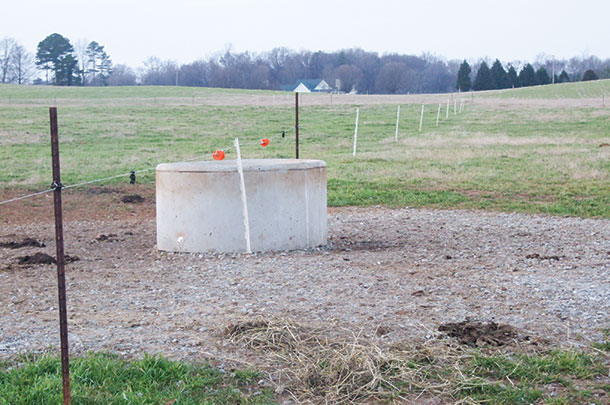
Not only did they make a successful operation out of a farm that was in complete shambles, they took it a step further by incorporating practices that would sustain the land for years to come.
“It became obvious to us that agriculture was about much more than production,” Chandler says. “The concept of proper stewardship of the resources we have been blessed to manage redirected our focus and led us toward a different style of operating.”
Chandler whole-heartedly believes practices like intensive rotational grazing, non-traditional forages, the use of animal manures as their primary nutrient source, and no-till are what has allowed them to become more productive, more efficient and more profitable.
Giving credit where credit is due
When Chandler was introduced to the concept of rotational grazing in the early 90s, the wheels in his mind started to turn, calculating ways he could implement this practice on his operation.
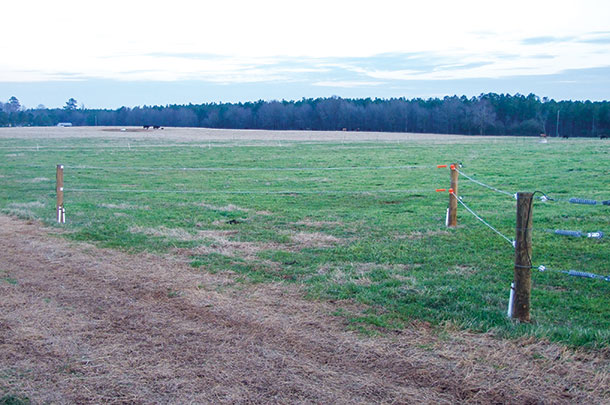
So for the next three years, with temporary fencing, Chandler implemented a rotational management scheme that eventually led to increased forage production, improved soil health and an easier-to-manage cowherd.
“I could actually see the improvements as it began to – not just sustain the soil – but over time I could see the topsoil building and accumulating. I could also see improvements in our crop residue and infiltration over time,” he says. “If I had to give credit to one thing that has done wonders for us, it would be rotational grazing.”
After three years of what Chandler calls his “trial run,” he had the opportunity to attend a seminar that explained some of the more important details like design, water placement and grazing distribution.
He was then able to design a more permanent fencing system and draft out a grazing plan. Today, the system runs somewhat similar as to what it did then; with 5-acre paddocks, a rotation based on the time of year and the available forage, and access to water within 700 feet of every paddock.
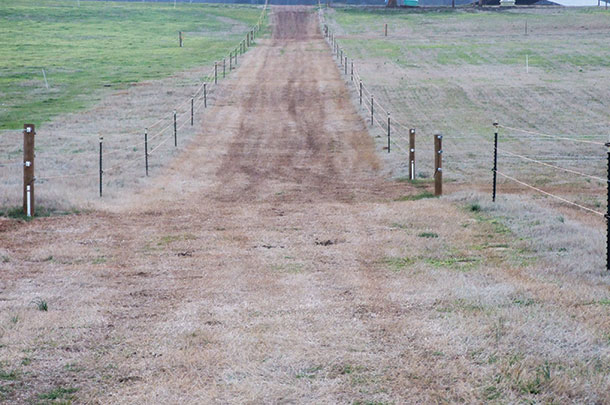
“We did away with traffic lanes inside the paddock and the grazing distribution is just tremendous,” he says. “We are doing a much better job with nutrient cycling; as we’ve been able to adapt these changes it really has been phenomenal. I can’t say enough about it.”
As time went on, Chandler was also able to adapt and implement novel forages and forage brassicas into his rotations. Plants like tillage radish were and still are utilized today in specific areas to increase the diversity in individual paddocks.
He also increases the plant diversity by incorporating as much as a seven-species mix – the majority being legumes – into the production cycle.
By increasing the diversity in his paddocks he has noticed invaluable improvements in the microbial activity in the soil. He believes that all those things – plant diversity, crop residue and grazing management – work together to aid in the soil- building process.
“There’s no question in my mind that rotational grazing has a place on every grazing operation,” Chandler says. “Every operation looks different, they deal with different soils, different types of livestock – whether it’s goats, cattle or sheep – they may be multi-species grazing, but somewhere in every operation there is a way to capture the benefits."
"The paddock size may be smaller, their configurations may be a little different than mine, but those fundamental principles will work on every operation.”
How does he manage it all?
Anyone that knows the Chandlers, knows they have a lot going on. Between running and managing all segments of the farm, spending time with family, providing internships and field trips for their local school district, they have a lot on their plate, but they continue to strive to give everything top priority.
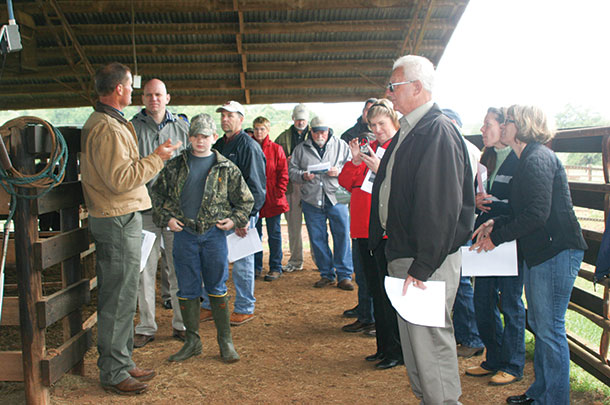
“It’s a difficult thing to juggle,” Chandler says. “My personal philosophy is everything has top priority; you can’t manage your hogs less, you can’t manage your cattle less, something can’t be number one and something else take second and third. Everything from a management standpoint has to take top priority.”
Chandler says there will always be days or times during the day when more of his time is focused on one of the enterprises. But at the same time, the level of management that he directs toward each one has to remain top priority to maintain the success in each segment.
Looking ahead, Chandler plans to continue to improve the utilization of his forages through rotational grazing. He believes with the proper stocking rate he can eliminate winter feeding and ultimately increase his profitability and relieve him from some of his day-to-day tasks.
He is also looking into multi-species grazing and the advantages that practice has on weed control.
Everything Chandler does on his operation connects in some way. Whether it’s his poultry operation and the utilization of poultry litter on the paddocks, or the cattle operation and the utilization of diverse forages to improve the soil, it all works collectively to improve and sustain the land.
“I’m here a very short period of time in the big picture,” Chandler says. “My time on earth is going to be very short, but it’s my obligation and pleasure to be a good steward of the resources we have."
"I take that very seriously and that’s probably the underlying reason for us continually challenging our thought process and making sure we are good stewards of the resources we have, but with certainty, soil being the most important.”
It may have been a crazy ride for Chandler and his family, but it’s a ride he feels blessed for and thanks God to have been on. FG
PHOTO 1: Over two miles of exclusion fence (most of which is three-strand high-tensile electric and wildlife friendly) provides a 25-30’ grassed buffer zone and eliminates livestock access to all surface water.
PHOTO 2: One of 18 watering troughs (16 open concrete and 2 insulated poly waterers) serves two grazing paddocks located within 700 feet of any grazing point. The area immediately surrounding each is a protected heavy-use area (geo-textile fabric covered with 6 inches of crush-and-run gravel)
PHOTO 3: Simple (and inexpensive) paddock access allows cattle to be “funneled” into a pen from the traffic lane or from one pen to the next. It also grants easy equipment access when needed.
PHOTO 4: An access (traffic) lane connects the paddocks, creating an easy access from pen-to-pen and the working facilities. It helps make sorting in the pasture simple and quick.
PHOTO 5: Terry Chandler (on the far left) often welcomes students and other producers on his farm to learn about the importance of good grazing management and other practices he incorporates. Photos provided by Terry Chandler.

-
Cassidy Woolsey
- Editor
- Progressive Cattleman
- Email Cassidy Woolsey
